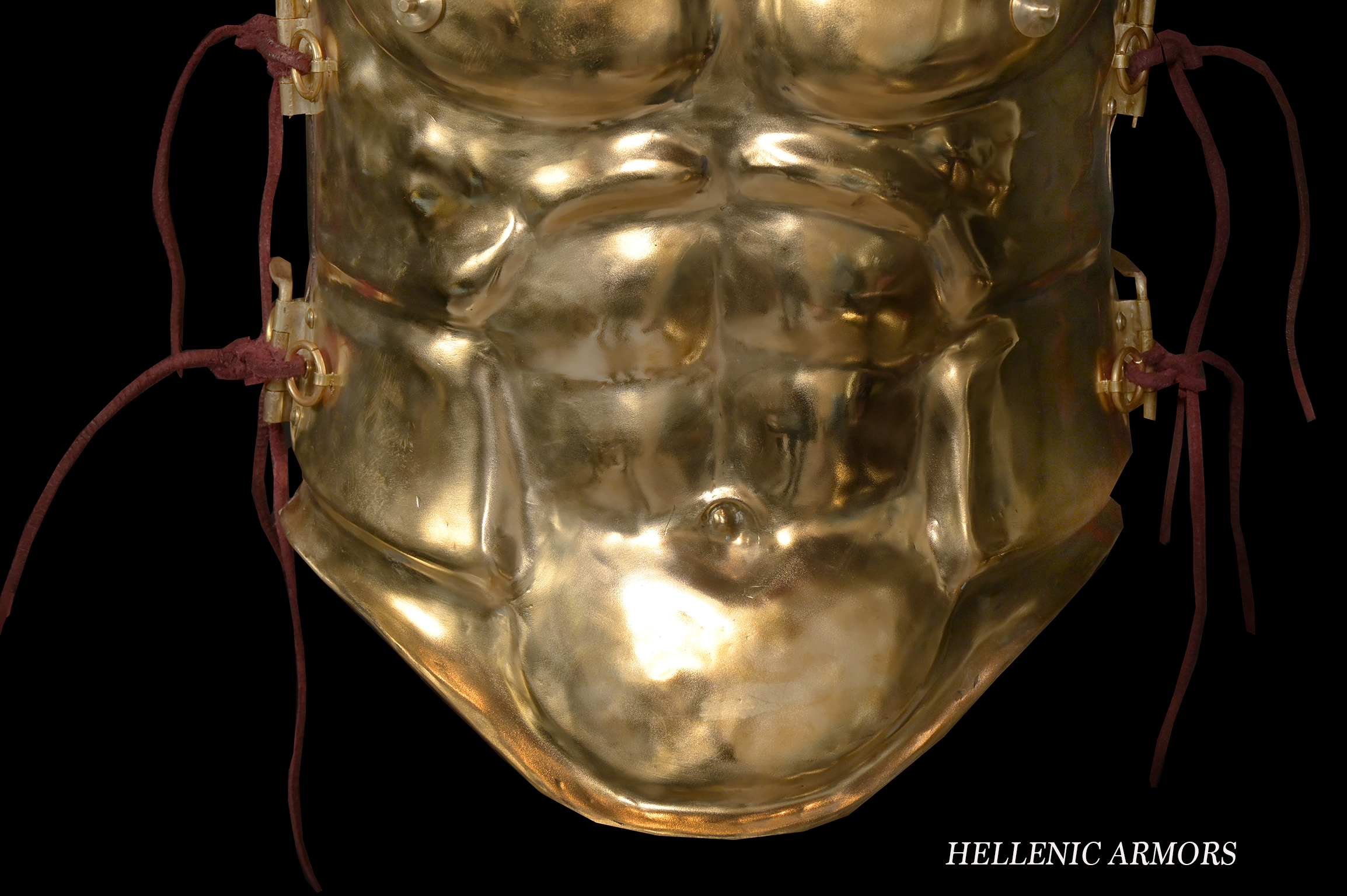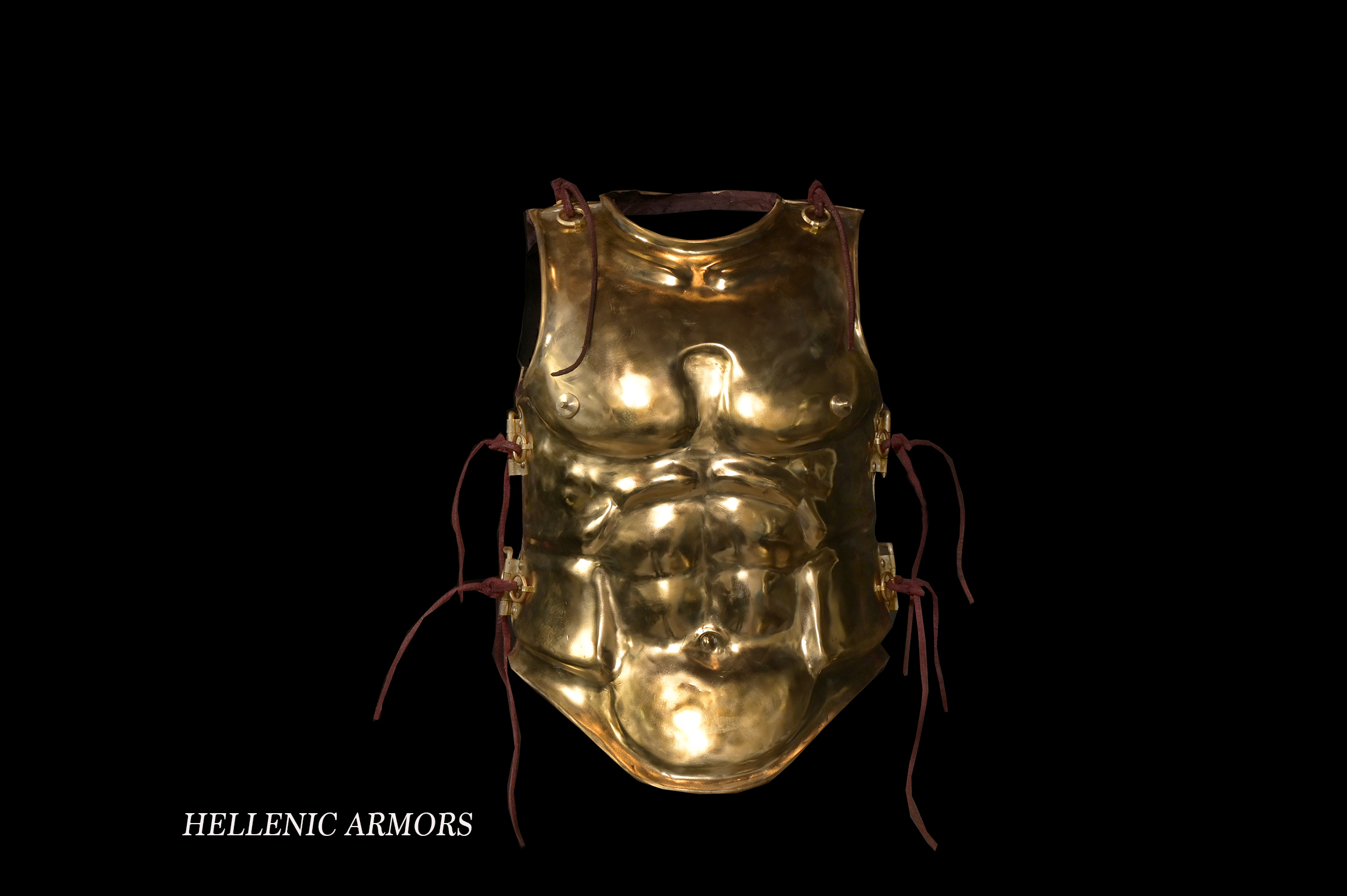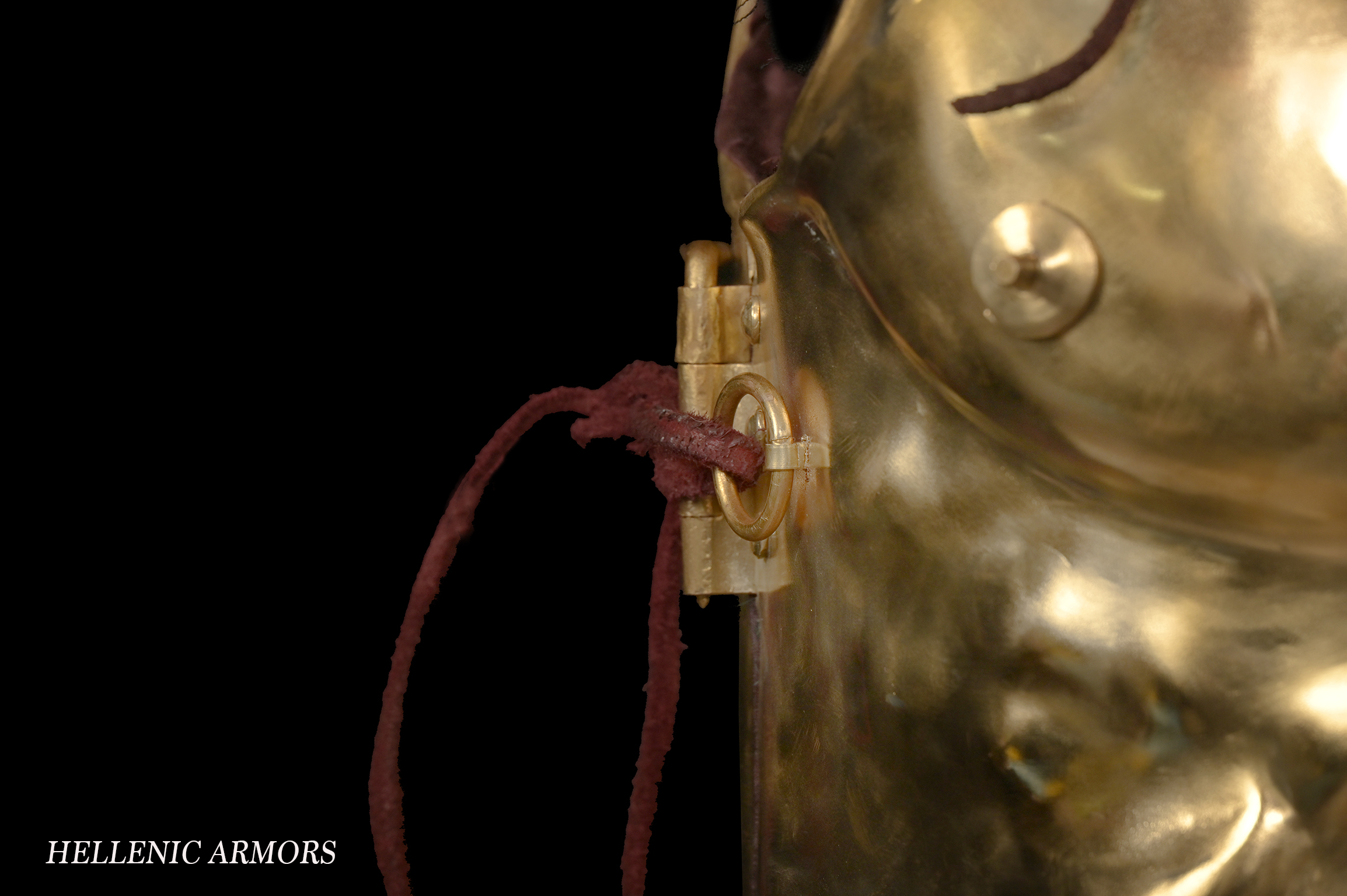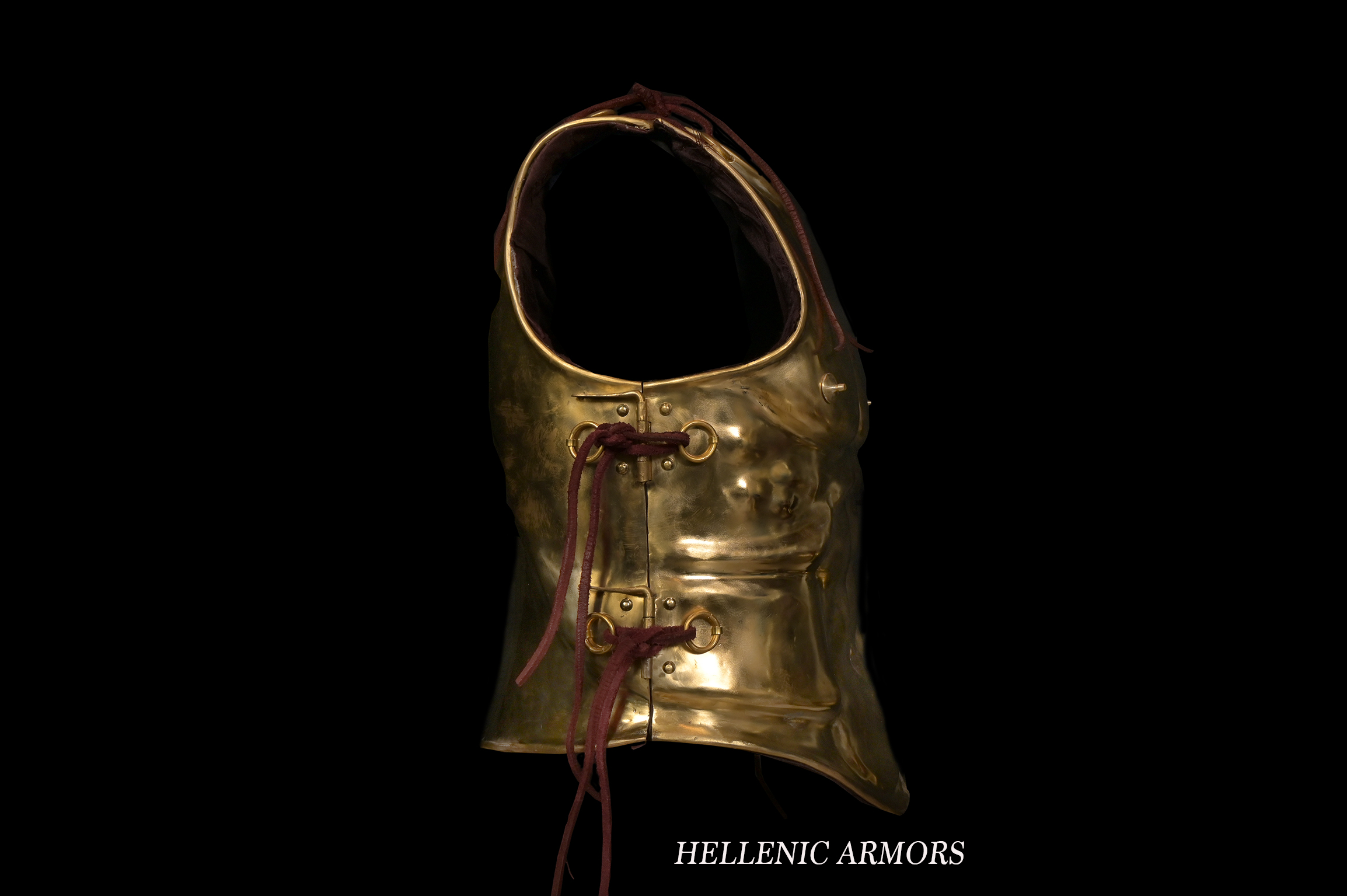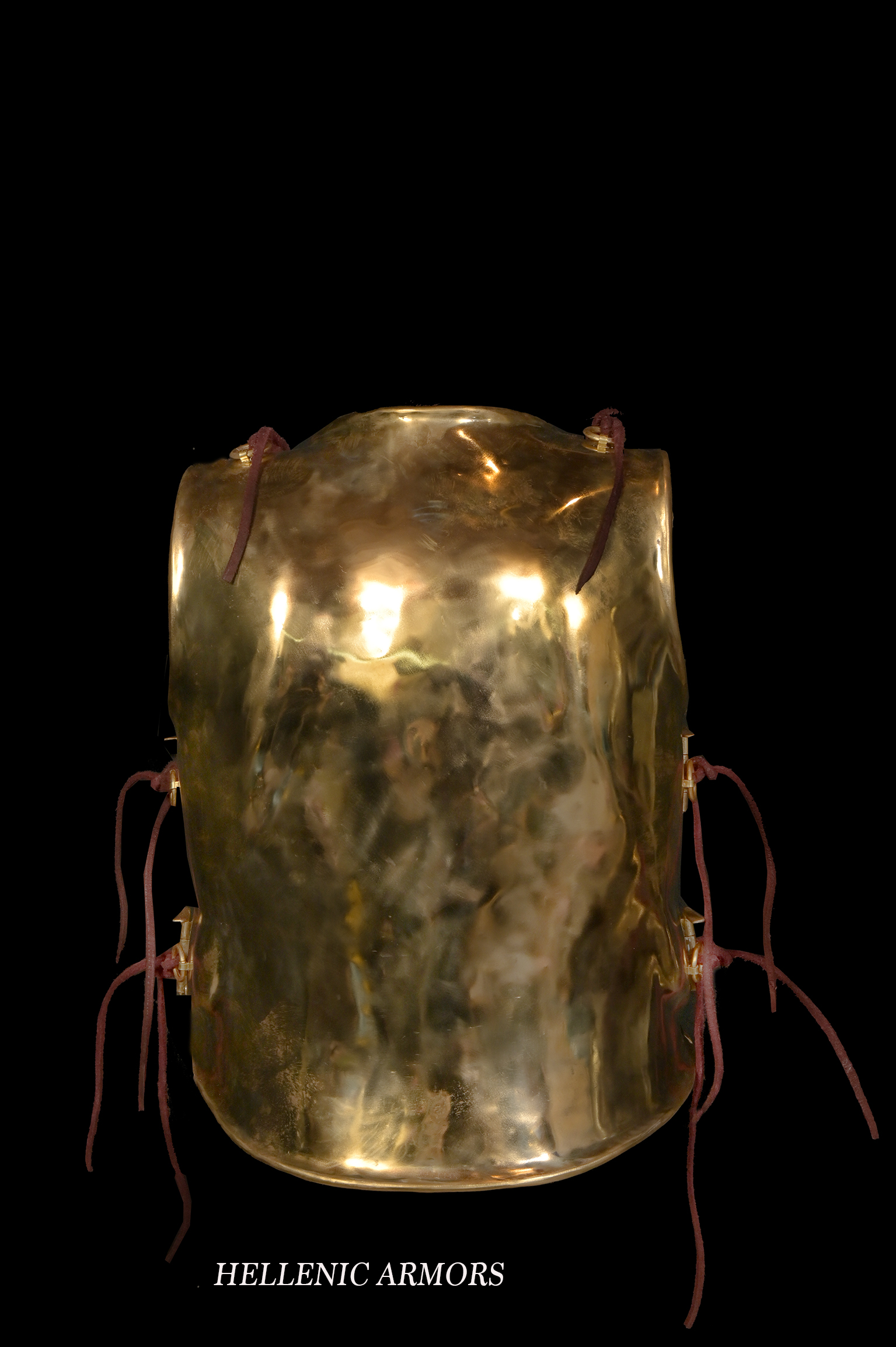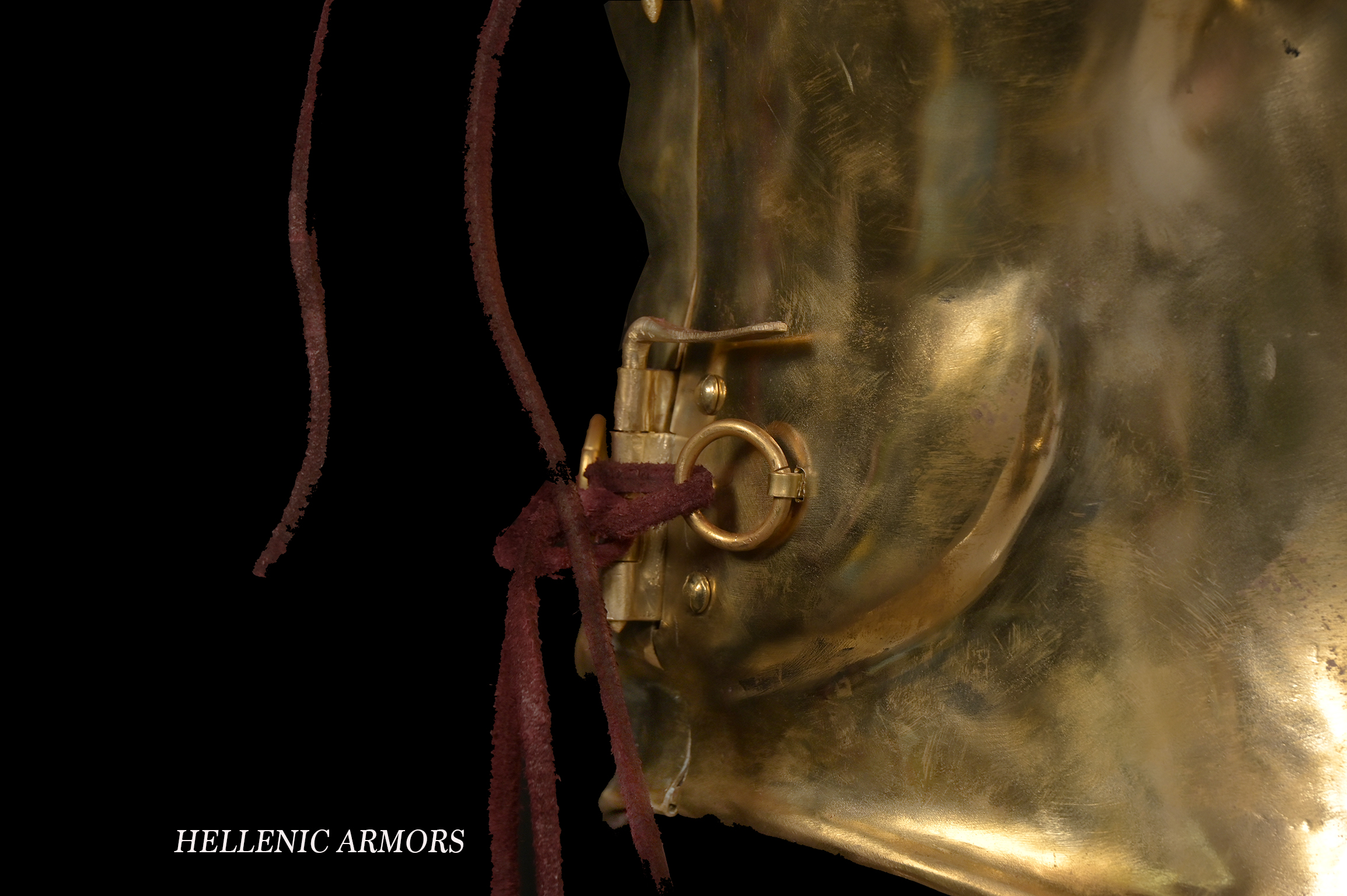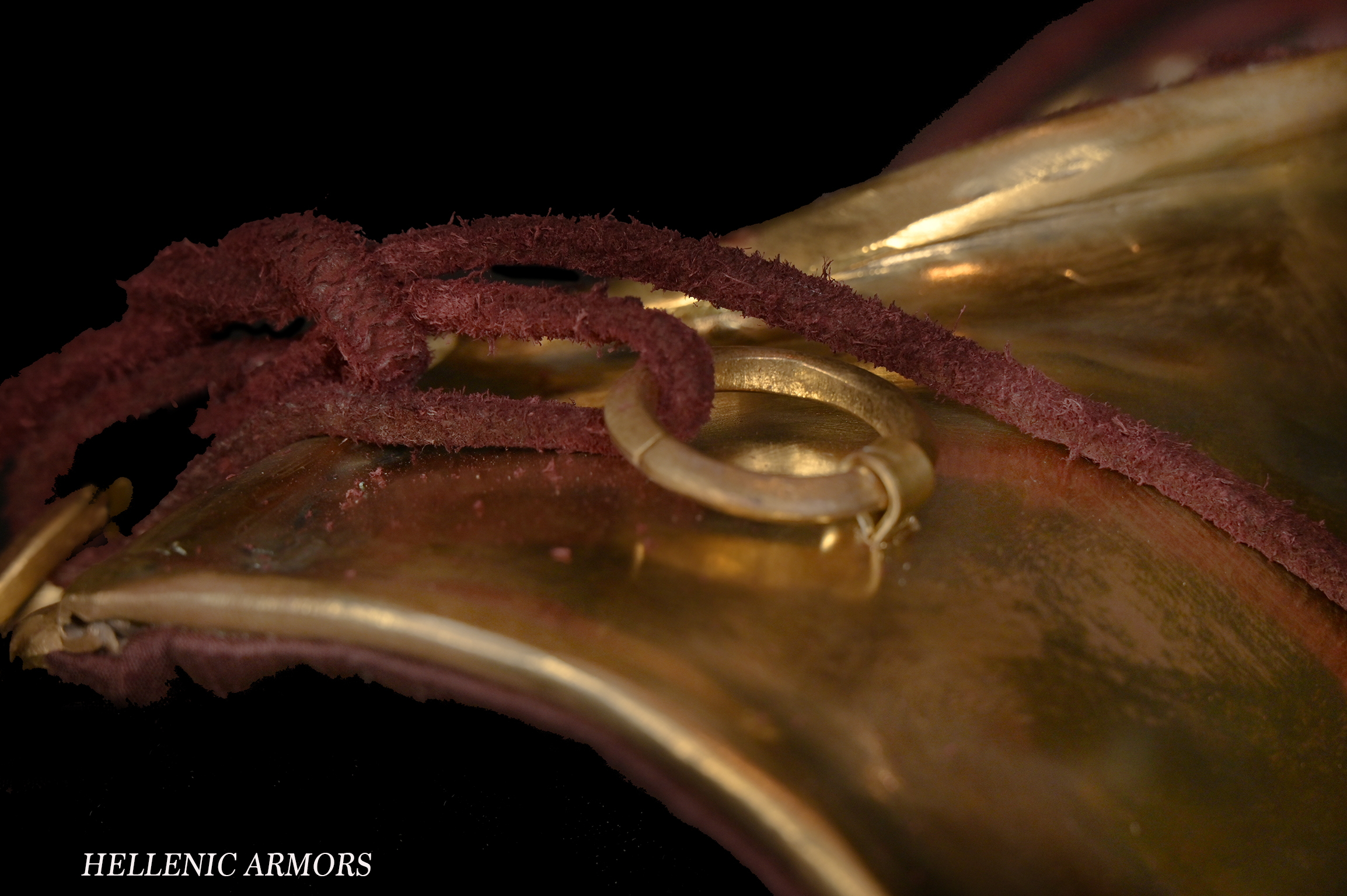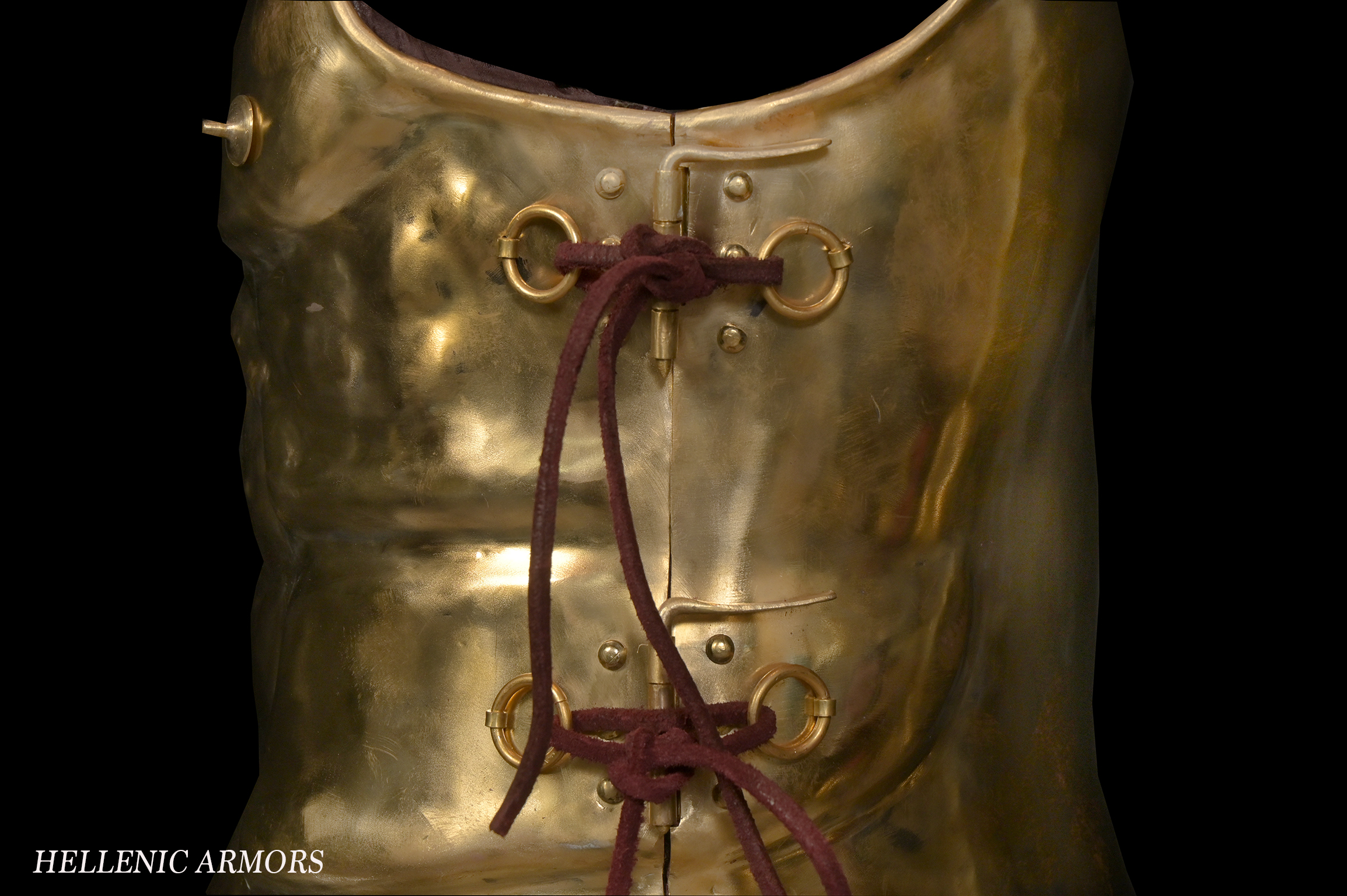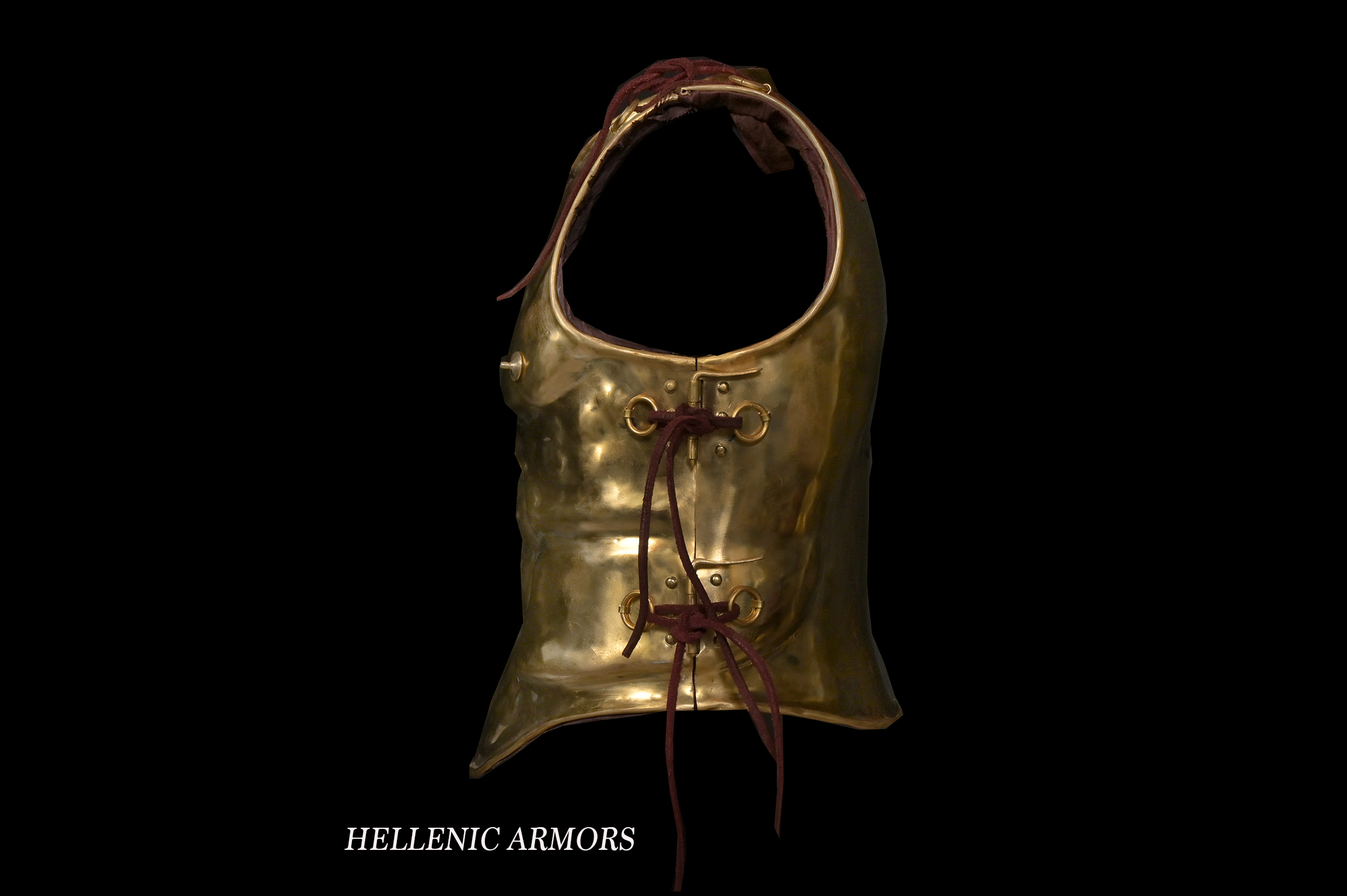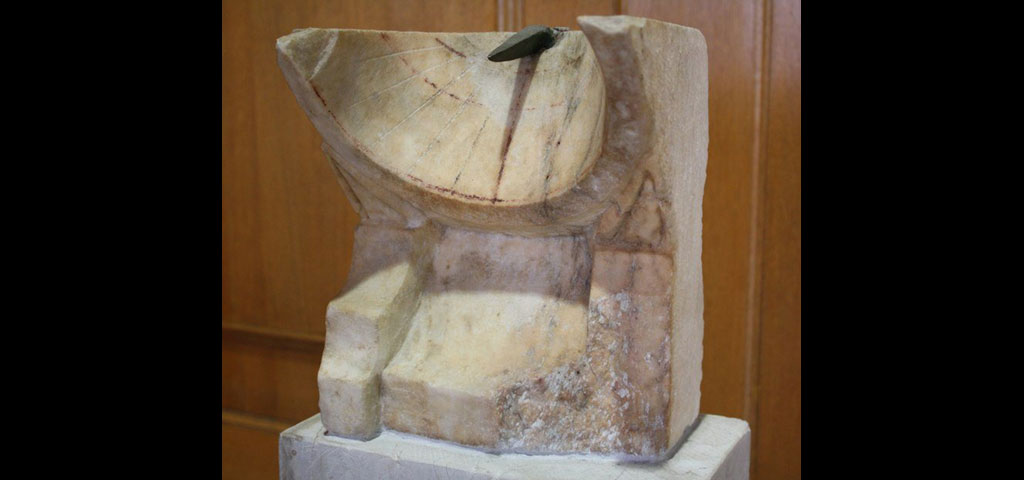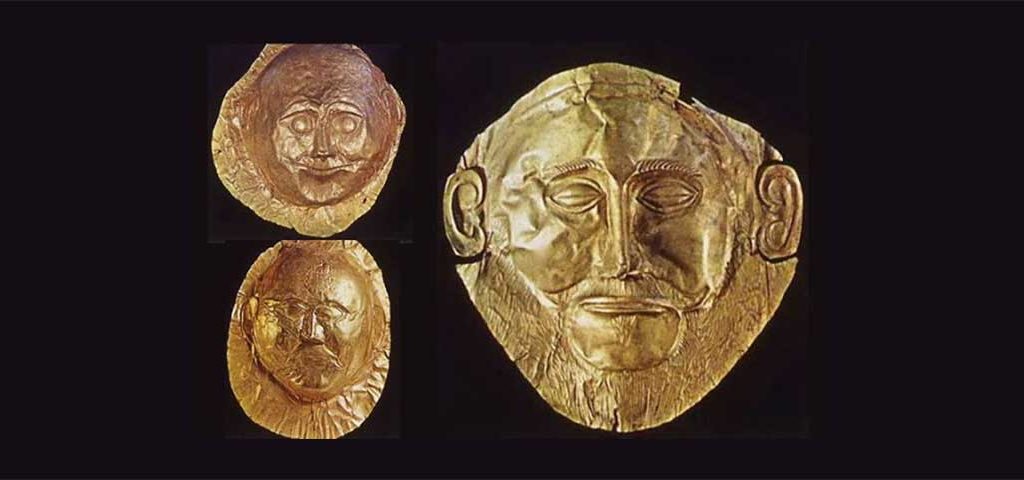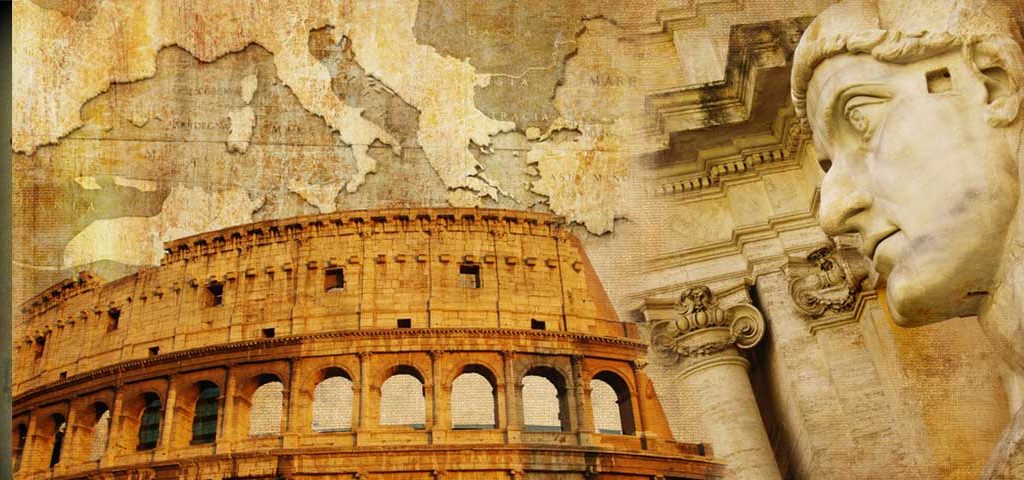Ancient Greek Armors
Μuscle cuirass from Magna Graecia ( Leiden Museum)
340-330 B.C
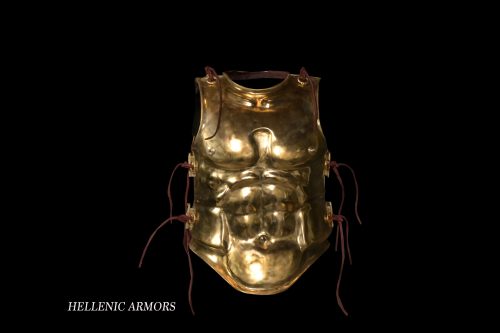
The original artfact originated c from Southern Italy,it has been dated between 340-330 BC and definitely comes from a Greek workshop “Magna Graecia”. Today it being exhibited in the Netherlands, specifically in the Archaeological Museum of Leiden (National Museum of Antiquities, The Netherlands).
The cuirass is being consisted by two separate bronze pieces, the pectoral and the dorsal plate (1,2mm thickness) and has been modeled according to authentic archaeological finding which imitate the anatomical idealistic features of an athletic male physique (pectoral muscles, abdominal muscles, elaborate navel and inset bronze nipples) with a bit of extra masculine features. All the edges of the plates (neck, arm, lower body) have been rolled inwards in order to prevent chafing and discomfort.
The two plates being held together through a system of ring fasteners by means of “butterfly” pins (six pairs) and riveted tubular bronze hinges with pins (four such pairs-under armpit areas).Two pairs of elaborated rings (rhombus cross section) hold together the two pieces on the area of the shoulders.
Thick woolen padding and silk lining covers all the internal surfaces of the cuirass. Padding was necessary for the protection of the skin from abrasion and heat and to absorb wounds and, of course, to stabilize the whole structure on the torso effectively.
The formation of the metal sheets was achieved exclusively with traditional hot raising (combined use of anvils and hammers) by the Athenian metal artist Dimitrios.
